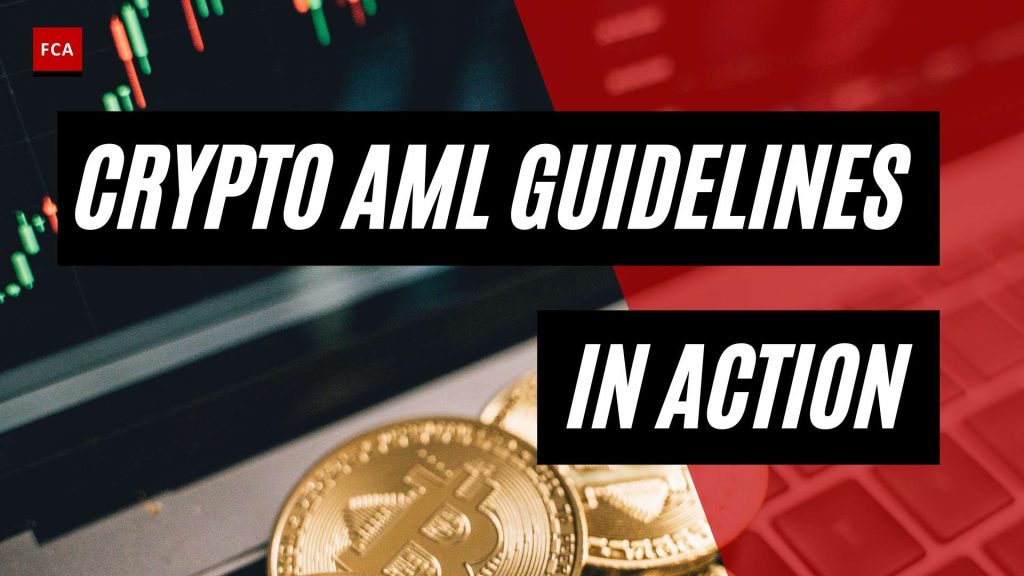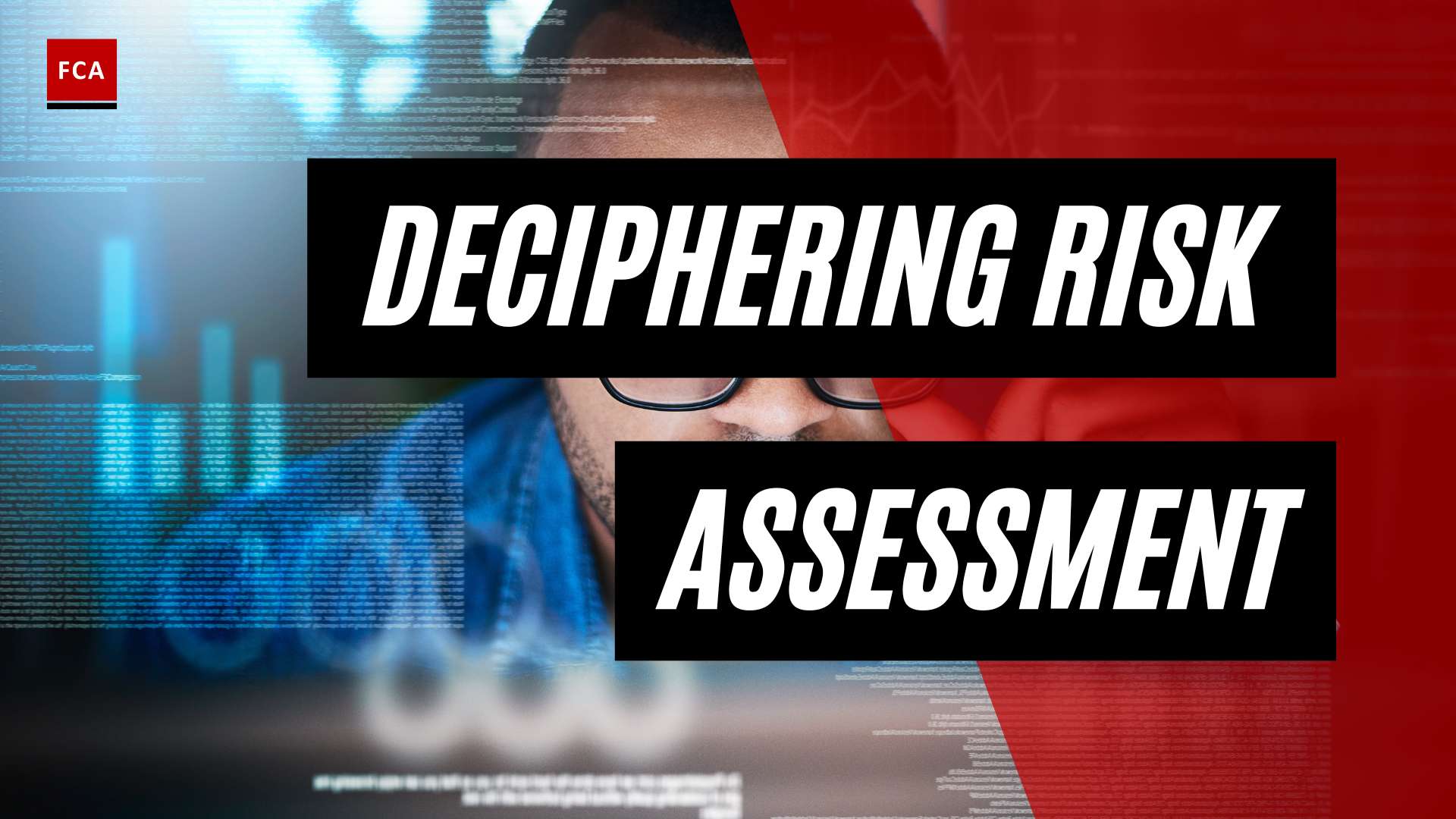Understanding Cryptocurrency and AML
To comprehend the dynamics of Anti-Money Laundering (AML) in the realm of cryptocurrency, it is crucial to first gain an understanding of the nature of cryptocurrency itself and the significance of AML in this context.
Introduction to Cryptocurrency
Cryptocurrency is a digital or virtual form of currency that utilizes cryptography for secure financial transactions and control the creation of additional units. Unlike traditional fiat currencies, cryptocurrencies operate on decentralized networks, such as blockchain technology, which ensures transparency, security, and immutability of transactions.
Cryptocurrencies have gained significant popularity and adoption due to their potential for efficient cross-border transactions, low fees, and potential for investment and speculation. However, the decentralized nature of cryptocurrencies and the anonymity they provide have also attracted the attention of criminals seeking to exploit these features for illicit activities, including money laundering and terrorist financing.
Importance of Anti-Money Laundering (AML) in Cryptocurrency
Anti-Money Laundering (AML) refers to the set of regulations, policies, and procedures implemented by financial institutions and other regulated entities to detect, prevent, and report money laundering and other illicit activities. AML regulations are designed to ensure the integrity of the financial system, protect against financial crimes, and maintain the stability of economies.
In the context of cryptocurrency, AML becomes particularly crucial due to the potential anonymity, cross-border nature, and ease of transferring funds associated with cryptocurrencies. Criminals exploit these features to disguise the origins and destinations of illicit funds, making it imperative for regulatory bodies and industry stakeholders to implement robust AML measures to mitigate the risks posed by cryptocurrency-related money laundering.
The increasing regulatory focus on cryptocurrency AML aims to strike a balance between embracing the potential benefits of decentralized finance and safeguarding against financial crimes. By establishing and adhering to comprehensive AML guidelines, stakeholders in the cryptocurrency ecosystem can contribute to the integrity and legitimacy of the industry.
In the next section, we will delve into the regulatory landscape for cryptocurrency AML, examining the key components that form the foundation of effective AML guidelines in the cryptocurrency space. Stay tuned for insights on cryptocurrency AML regulations and best practices for AML compliance in the realm of cryptocurrency.
AML Guidelines for Cryptocurrency
To combat the risk of money laundering and illicit activities in the cryptocurrency space, robust Anti-Money Laundering (AML) guidelines have been established. These guidelines provide a regulatory framework for cryptocurrency businesses and promote transparency and accountability within the industry. In this section, we will explore the regulatory landscape for cryptocurrency AML and the key components of these guidelines.
Regulatory Landscape for Cryptocurrency AML
The regulatory landscape for cryptocurrency AML is evolving and varies across different jurisdictions. Governments and regulatory bodies around the world have recognized the need to address the potential risks associated with cryptocurrencies. They have implemented regulations and guidelines to ensure that cryptocurrency businesses adhere to AML standards.
While the specific requirements may differ, most jurisdictions require cryptocurrency businesses to implement AML measures that are comparable to those in traditional financial institutions. These measures include customer identification, transaction monitoring, and reporting suspicious activities. It is crucial for cryptocurrency businesses to stay updated with the latest AML regulations in their respective jurisdictions to remain compliant and mitigate risks.
Key Components of Cryptocurrency AML Guidelines
Cryptocurrency AML guidelines typically encompass several key components that aim to establish effective controls and mitigate risks. These components include:
-
Customer Due Diligence (CDD): Cryptocurrency businesses are required to conduct thorough customer identification and verification procedures. This helps ensure that they have a clear understanding of their customers’ identities and the nature of their transactions. Enhanced due diligence measures are often applied to high-risk customers, such as politically exposed persons (PEPs) and individuals from high-risk jurisdictions.
-
Transaction Monitoring: Cryptocurrency businesses must implement robust systems and processes to monitor transactions for suspicious activities. This involves analyzing transaction patterns, identifying red flags, and conducting further investigations when necessary. Automated transaction monitoring systems play a crucial role in detecting unusual or potentially illegal activities.
-
Reporting Obligations: Cryptocurrency businesses have reporting obligations to regulatory authorities. They are required to report suspicious transactions that may be linked to money laundering or other illicit activities. These reports help regulatory authorities in their efforts to combat financial crimes and maintain the integrity of the financial system.
-
Risk Assessment and Mitigation: Cryptocurrency businesses need to conduct comprehensive risk assessments to identify and assess potential money laundering risks associated with their operations. Based on these assessments, they should implement risk-based controls and mitigation strategies to address the identified risks effectively.
-
Collaboration and Compliance: Collaboration among stakeholders, including cryptocurrency businesses, regulators, and law enforcement agencies, is crucial for the effective implementation of AML measures. It facilitates information sharing, enhances the detection and prevention of financial crimes, and promotes a strong compliance culture within the cryptocurrency industry.
By adhering to the key components of cryptocurrency AML guidelines, businesses can contribute to the overall integrity and trustworthiness of the cryptocurrency ecosystem. Implementing robust AML measures not only helps protect businesses from potential legal and reputational risks but also contributes to the global fight against money laundering and illicit activities.
To further strengthen your understanding of cryptocurrency AML, you may explore related topics such as cryptocurrency anti-money laundering, cryptocurrency compliance, and cryptocurrency transaction monitoring.
Know Your Customer (KYC) Measures
To combat money laundering and terrorist financing in the realm of cryptocurrency, implementing robust Know Your Customer (KYC) measures is crucial. KYC procedures help cryptocurrency businesses identify and verify the identities of their customers, ensuring compliance with Anti-Money Laundering (AML) regulations. Let’s explore two key components of KYC measures: customer identification and verification, as well as enhanced due diligence for high-risk customers.
Customer Identification and Verification
Customer identification and verification are fundamental processes for establishing the identity of individuals engaging in cryptocurrency transactions. This involves collecting and verifying information such as the customer’s full name, date of birth, address, and government-issued identification documents. By performing diligent customer identification and verification, businesses can ensure that they are not facilitating transactions for individuals involved in illicit activities.
KYC procedures for customer identification typically involve the following steps:
-
Collecting Customer Information: Cryptocurrency businesses collect relevant customer information, including personal details and identification documents.
-
Document Authentication: Verification of the authenticity of identification documents is essential to ensure that the provided documents are genuine and have not been tampered with.
-
Identity Verification: Cryptocurrency businesses employ various methods to verify the identity of their customers. This can include verifying the information against trusted databases, conducting background checks, and utilizing identity verification services.
By implementing thorough customer identification and verification processes, businesses can mitigate the risk of facilitating transactions for individuals attempting to launder money or engage in other illicit activities.
Enhanced Due Diligence for High-Risk Customers
In addition to standard customer identification and verification, enhanced due diligence (EDD) is necessary for customers deemed to be of higher risk. High-risk customers typically include politically exposed persons (PEPs), individuals from high-risk jurisdictions, or those involved in high-value transactions.
EDD measures may include:
-
Source of Funds: Cryptocurrency businesses should conduct detailed investigations into the source of funds for high-risk customers to ensure they are legitimate and not derived from illicit activities.
-
Transaction Monitoring: Implementing robust transaction monitoring systems allows businesses to identify any suspicious activities associated with high-risk customers. This includes monitoring transaction patterns, amounts, and frequency.
-
Ongoing Monitoring: High-risk customers should be subjected to continuous monitoring to detect any changes in their risk profiles or suspicious activities over time.
By conducting enhanced due diligence on high-risk customers, cryptocurrency businesses can effectively manage the potential risks associated with these individuals and take appropriate actions to deter money laundering and illicit financial activities.
Implementing strong KYC measures, including customer identification and verification as well as enhanced due diligence for high-risk customers, is essential for cryptocurrency businesses to comply with AML regulations and combat money laundering. By adopting these measures, businesses can contribute to a safer and more secure cryptocurrency ecosystem.
Transaction Monitoring and Reporting
Effective transaction monitoring and reporting play a vital role in combating money laundering and other illicit activities within the cryptocurrency industry. Cryptocurrency Anti-Money Laundering (AML) guidelines emphasize the importance of implementing robust mechanisms to detect and report suspicious activities. This section will delve into two key aspects of transaction monitoring and reporting: suspicious activity monitoring and reporting obligations.
Suspicious Activity Monitoring
To identify potential money laundering or illicit activities, cryptocurrency businesses must implement diligent suspicious activity monitoring procedures. This involves the continuous monitoring of customer transactions and behaviors to identify any unusual patterns or red flags. The aim is to detect transactions that deviate from regular patterns or fall within predefined risk thresholds.
Key indicators of suspicious activity in cryptocurrency transactions may include:
- Large and frequent transfers of funds to high-risk jurisdictions.
- Rapid movement of funds between multiple cryptocurrency wallets.
- Transactions involving known illicit actors or addresses.
- Layering techniques, such as multiple transactions to obscure the origin of funds.
- Transactions that attempt to bypass Know Your Customer (KYC) requirements.
By employing advanced transaction monitoring tools and technologies, businesses can flag and investigate potentially suspicious activities promptly. These tools can also leverage machine learning algorithms to detect emerging patterns and adapt to evolving money laundering techniques. To explore more about transaction monitoring, refer to our article on cryptocurrency transaction monitoring.
Reporting Obligations and Suspicious Transaction Reporting
Cryptocurrency businesses are subject to various reporting obligations to combat money laundering and other financial crimes. These obligations typically require them to report suspicious transactions to relevant authorities. The specific reporting requirements may vary depending on the jurisdiction and regulatory framework in place.
When a suspicious transaction is identified, it is crucial for businesses to promptly report it to the appropriate authorities. This reporting process ensures that the suspicious activity is thoroughly investigated and appropriate actions are taken. Failure to report suspicious transactions can lead to severe penalties and reputational damage for the business.
To facilitate reporting, businesses should establish clear procedures and channels for reporting suspicious transactions. This includes maintaining proper documentation, records, and audit trails to support the reporting process. Additionally, businesses may leverage technology solutions, such as cryptocurrency AML software, to streamline and automate the reporting process while ensuring compliance with regulatory requirements.
By diligently monitoring transactions and fulfilling reporting obligations, cryptocurrency businesses contribute to the collective effort in combating money laundering and safeguarding the integrity of the financial system. Compliance with transaction monitoring and reporting guidelines is essential for maintaining regulatory compliance and building a robust defense against illicit activities within the cryptocurrency industry.
Risk Assessment and Mitigation
In the world of cryptocurrency, effective risk assessment and mitigation are crucial components of any Anti-Money Laundering (AML) program. By identifying and understanding the potential risks associated with cryptocurrency transactions, organizations can implement robust controls and mitigation strategies to safeguard against money laundering and other illicit activities. This section will explore the process of identifying and assessing cryptocurrency AML risks, as well as the implementation of risk-based controls and mitigation strategies.
Identifying and Assessing Cryptocurrency AML Risks
To effectively combat money laundering in the cryptocurrency space, organizations must first identify and assess the specific risks associated with these transactions. Some common risks include:
- Anonymity: Cryptocurrency transactions often provide a certain degree of anonymity, making it challenging to trace the source and destination of funds.
- Pseudonymity: While transactions may not be entirely anonymous, individuals may use pseudonyms or aliases, making it difficult to link transactions to real-world identities.
- Lack of Regulation: The cryptocurrency industry is still evolving, with varying levels of regulatory oversight across jurisdictions. This lack of uniform regulation can create opportunities for illicit activities.
- Complex Transactions: Cryptocurrency transactions can involve complex mechanisms, such as mixing services and tumblers, which can obfuscate the true origin and destination of funds.
- Emerging Technologies: The rapid development of new technologies, such as privacy coins and decentralized exchanges, introduces additional challenges for AML efforts.
To assess these risks, organizations should conduct a comprehensive evaluation of their cryptocurrency activities, including assessing the types of cryptocurrencies involved, the nature of transactions, and the jurisdictions in which they operate. This assessment should also consider factors such as customer profiles, transaction volumes, and the use of third-party services.
Implementing Risk-Based Controls and Mitigation Strategies
Once the risks have been identified and assessed, organizations can implement risk-based controls and mitigation strategies tailored to their specific needs. These controls should aim to detect, prevent, and mitigate potential money laundering risks associated with cryptocurrency transactions. Some key strategies include:
- Customer Due Diligence (CDD): Implement robust Know Your Customer (KYC) measures to verify the identity of customers and assess their risk profile. This includes collecting customer information, conducting identity verification, and assessing the purpose and expected nature of the business relationship.
- Transaction Monitoring: Implement transaction monitoring systems that can analyze cryptocurrency transactions in real-time. These systems should use algorithms and rules to detect suspicious patterns, such as large transactions, rapid transfers, or transactions involving high-risk jurisdictions.
- Compliance Training: Provide comprehensive training programs to educate employees about the risks associated with cryptocurrency transactions and the importance of AML compliance. Training should cover topics such as identifying red flags, reporting obligations, and the organization’s AML policies and procedures.
- Partnership and Collaboration: Foster collaboration and information sharing among stakeholders, including regulatory authorities, financial institutions, and cryptocurrency service providers. This collaboration can help identify emerging trends, share best practices, and enhance the overall effectiveness of AML efforts.
- Risk-Based Approach: Tailor risk mitigation strategies based on the assessed level of risk. Allocate resources and focus efforts on higher-risk areas, such as transactions involving privacy coins or transactions with customers from high-risk jurisdictions.
By implementing these risk-based controls and mitigation strategies, organizations can strengthen their AML defenses in the cryptocurrency space. It’s important to note that the cryptocurrency landscape is dynamic, and AML programs should be regularly reviewed and updated to adapt to emerging risks and regulatory changes.
For more information on cryptocurrency AML guidelines, compliance best practices, and the latest developments in the field, check out our articles on cryptocurrency anti-money laundering and crypto AML best practices.
Collaboration and Compliance
Collaboration among stakeholders and adherence to compliance requirements are essential in effectively implementing anti-money laundering (AML) measures in the world of cryptocurrency.
Importance of Collaboration among Stakeholders
In the fight against money laundering and illicit activities in the cryptocurrency space, collaboration among stakeholders is paramount. This includes cooperation between cryptocurrency exchanges, financial institutions, regulatory bodies, law enforcement agencies, and technology providers. By working together, these entities can share information, expertise, and resources to combat financial crime more effectively.
Collaboration allows for the development and implementation of industry-wide standards and best practices, creating a more consistent and robust framework for AML efforts. It enables the sharing of knowledge and insights into emerging AML trends, typologies, and techniques used by criminals. Through this collaborative approach, stakeholders can collectively stay one step ahead in the constantly evolving landscape of cryptocurrency-related financial crime.
To foster collaboration, industry associations, working groups, and forums play a vital role in bringing together different stakeholders. These platforms provide opportunities for dialogue, cooperation, and the development of joint initiatives to address common challenges. By engaging in open and transparent discussions, stakeholders can collectively enhance their understanding of AML risks and develop effective strategies to mitigate those risks.
Compliance Challenges and Best Practices
Compliance with AML regulations presents unique challenges in the cryptocurrency realm. The anonymous nature of transactions and the rapid pace of innovation in the industry require stakeholders to stay vigilant and adapt to changing circumstances. However, there are best practices that can help navigate these challenges:
-
Robust AML Policies and Procedures: Establishing comprehensive AML policies and procedures tailored to the specific risks of cryptocurrency transactions is crucial. This includes customer due diligence, transaction monitoring, and reporting mechanisms. Regular review and updates to these policies ensure their effectiveness in combating evolving money laundering threats.
-
Effective AML Screening: Implementing efficient and accurate AML screening processes is vital to identify and mitigate risks associated with cryptocurrency transactions. This includes screening customers, counterparties, and beneficiaries against relevant watchlists and sanctions databases. Utilizing advanced technology, such as cryptocurrency AML screening software, can enhance the efficiency and accuracy of these screening procedures.
-
Training and Awareness: Investing in AML training and awareness programs for employees and stakeholders is crucial to ensure a high level of compliance. Training should cover AML regulations, emerging trends, and the identification of suspicious activities. Regular updates and refresher courses keep stakeholders informed about the latest AML developments.
-
Technology and Data Analytics: Embracing innovative technologies, such as artificial intelligence and machine learning, can bolster AML efforts in the cryptocurrency sector. These technologies can help detect patterns, anomalies, and potential risks in vast amounts of transactional data. By leveraging cryptocurrency AML software, stakeholders can automate processes, improve accuracy, and enhance efficiency in compliance operations.
-
Continuous Monitoring and Auditing: Implementing robust transaction monitoring systems enables the identification of suspicious activities in real-time. Regular audits and independent assessments of AML controls help ensure compliance with regulatory requirements and identify areas for improvement.
By embracing collaboration and adhering to best practices, stakeholders in the cryptocurrency industry can strengthen their AML efforts and contribute to a safer and more transparent financial ecosystem.








